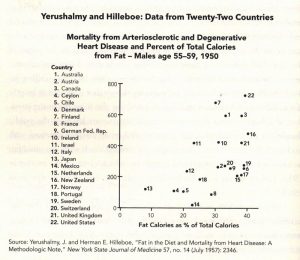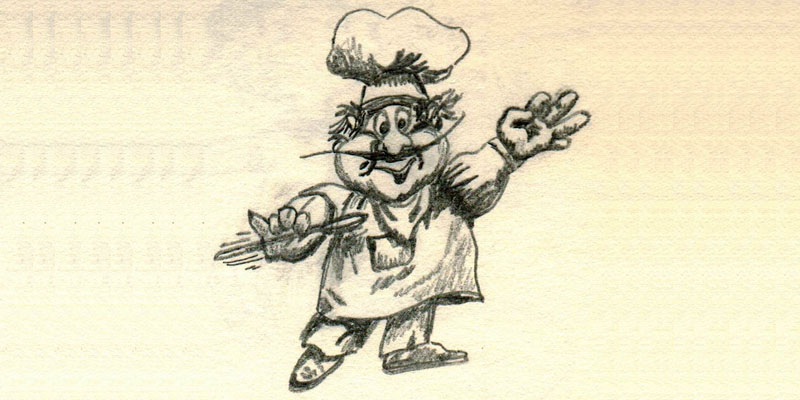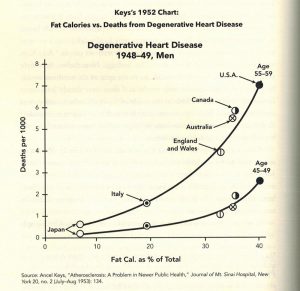Disclaimer: I am not a doctor, so take everything I write with a big pill of aspirin.
As I mentioned in my previous post, My Brain is Made Out of Saturated Fat!, after I added fat and meat back to my diet, my cholesterol levels strangely improved.
For two years, I had eliminated fat, reduced meat consumption, and exercised regularly to improve my blood chemistry. Dishearteningly, my cholesterol level refused to change (hovering around 230) and worse, my HDL (the good high-density cholesterol) decreased significantly (from 52 to 36). After watching the Fat Head movie, I started eating fats and meat moderately and even reduced the amount of exercise I got. My cholesterol level dropped to 200 and my HDL increased to 48, both borderline normal!
I didn’t understand why, but was just glad that I could enjoy the occasional, mouth-watering marbled steak again. I decided to eat everything I wanted, in moderation; though I continued to avoid sugar, especially in the form of soda, and heavily processed food items, like hot pockets.
In honor of my Russian coworker’s “eat everything but don’t overdo it, stupid” philosophy, I named this diet the Russian Roulette Diet. Basically, put all the different foods on the roulette, spin, and then consume whatever food gets landed on… in moderation. It’s Russian roulette because eventually, the latest science will warn us that a few of those food or food ingredients are very bad for us… and then tell us that what was bad before is now okay or good.
I just read Nina Teicholz’s book, titled “The Big Fat Surprise”, and it has cleared up some of my food confusion. Evidently, the modern recommendation to avoid fats, especially saturated fats (meat, butter and cheese), is not based upon good or sound science. This low-fat, low-cholesterol diet was proposed in the mid-20th century and then seized upon by the government (in the 1970’s) as the answer to the increase in heart disease rates during the first half of the 20th century. Since then, obesity and diabetes have increased drastically.
Instead, the preponderance of the scientific evidence suggests that eating meat, butter and cheese is better for our health. However, this is not a license to eat any sort of fat, saturated or otherwise.
I recommend avoiding heavily processed food such as meat that has been pulverized and glued back together (with chemicals and preservatives) into a pleasing shape, a chicken nugget. Or fried food. Restaurants may be using trans-fat-free vegetable oil to fry with, but under sustained high heat, the vegetable oil (which is less stable than trans-fat-producing hydrogenated oils) may break down into toxic oxidative products. The long-term effect on the human body of such products is unknown.
Meat Good
From the Fat Head movie and the book, I learned that eating animal fat increases HDL and eating carbohydrates increases LDL (and lowers HDL). When I ate more fat and meat, my HDL increased and because I ate less carbohydrates (rice) as a result (of eating more meat), my LDL decreased. My total cholesterol dropped to around 200 (borderline normal).
There is no correlation between LDL and heart disease. There is a correlation between HDL and heart disease though. A follow-up to the famous, long-term Framingham Heart Study (which followed participants from 1948 and is still continuing today with their children and grand-children) indicates that someone with a HDL less than 35 mg/dL has eight times more risk of heart attacks than someone with a HDL greater than 65 mg/dL.
So, one can safely ignore the total cholesterol level (until it reaches near 300) and concentrate on the HDL level instead.
That correlation does not imply causation is drilled into every student of science. Just because B follows A does not mean A causes B.
Ancel Keys, the scientist who promoted the linkage of fat (in the diet) to serum cholesterol (in the blood) to heart disease, used the chart to the right to show a correlation between increased fat consumption and greater occurrence of heart disease. Keys concluded that fat is the cause of heart disease.
Yerushalmy and Hilleboe, two other scientists, showed that no correlation is evident when more than the six countries hand-picked by Keys are plotted. The plot of data from 22 countries suggests that the correlation between fat and heart disease is false.
 Yerushalmy theorized that wealth is the cause of increased heart disease rates. Rising prosperity in the mid-20th century led to increased consumption of sugar, protein (meat) and margarine (trans-fat), a more sedentary lifestyle (population movement to cities, use of automobiles), and increased vices such as smoking.
Yerushalmy theorized that wealth is the cause of increased heart disease rates. Rising prosperity in the mid-20th century led to increased consumption of sugar, protein (meat) and margarine (trans-fat), a more sedentary lifestyle (population movement to cities, use of automobiles), and increased vices such as smoking.
Wealth makes sense to me. People eat richer, unhealthier food (more calories in) and exercise less (less calories out). Weight increases and diseases (like diabetes and heart disease) are more prevalent. It seemed to me that Key’s six countries were the most industrialized and prosperous countries at the time, and all of them had increasing rates of heart disease as compared to Japan (less industrialized). If we look at countries that have industrialized recently, are growing prosperous, and have adopted the American diet (highly-processed, carbohydrate-rich food and sugar) like China, we see that they are experiencing increasing rates of obesity and diabetes.
Sugar is the Enemy
The “The Big Fat Surprise” book suggests that sugar is the enemy of the heart. High sugar levels in the blood cause inflammation and tearing of the artery. The damaged artery is then infected by bacteria (ever present in our body; the same bacteria responsible for gum disease). White blood cells and LDL (the supposedly bad low-density cholesterol) kill bacteria and fix the tearing. Cholesterol is not the cause, it is the spackle. Just because one sees a lot of spackle on the artery walls (of a person with heart disease) does not mean that the spackle is the cause (of the disease). The culprit is whatever is causing the damage and most likely, the culprit is sugar.
Furthermore, there is no compelling evidence to suggest that the narrowing or shortening of arteries (arteriosclerosis) is a cause of heart disease. The plaque (cholesterol spackle) buildup which leads to the arterial narrowing may just be a fact of growing old, caused by the multiple repairs across the years of infection. Or it could very well be that some plaque grows unstable (cause unknown), detaches from the artery wall, floats along the blood stream, and eventually causes a heart blockage. Until we know for certain, reducing sugar consumption seems to be the most prudent action.
Avoiding sugar means avoiding refined carbohydrates and fruit juice. The human body easily converts refined carbohydrates into glucose (a simple sugar) in the blood. Hence, the recommendation to eat unrefined brown rice instead of refined white rice, because the body will take longer to convert the brown rice (which avoids a sudden increase of blood sugar). Likewise, the body converts fruit juice easily into fructose (also a simple sugar) in the blood. Eating a whole fruit is recommended instead because the fiber (in whole fruit) slows down the absorption of the fructose into the blood stream.
Update: The book, “Good Calories, Bad Calories” by Gary Taubes, suggests an alternative cause of obesity that provides a compelling explanation for the role of carbohydrate/sugar. The book posits the following:
- “The basic proposition is that obesity is caused by a regulatory defect in fat metabolism” where rate of energy storage (fat) exceeds energy release; internally, the body starves which leads to over-eating and/or inactivity.
- “Insulin plays the primary role in this fattening process, and the compensatory behaviors of hunger and lethargy.”
- “Carbohydrates, and particularly refined carbohydrates — and perhaps the fructose content as well, and thus the amount of sugars consumed — are the prime suspects in the chronic elevation of insulin; hence, they are the ultimate cause of common obesity.”
So, to reduce the rate of energy storage, we need to reduce the level of blood insulin (“insulin regulates fat deposition”). To reduce insulin levels, we need to reduce the intake of carbohydrates (“carbohydrates regulate insulin”). To reduce the consumption of carbohydrates (sugar and starch), we need to increase the consumption of protein, fats, and non-starchy vegetables; evidently, people on non-carb or carb-restricted diets usually get satiated faster (don’t feel hungry all the time), so they tend not to overeat.
Listen to Your Body
Thankfully, my body tells me clearly when I am eating particularly badly. Besides having taste buds that prefer salt, my body punishes me if I consume too much sugar. After consuming a lot of sweets, I will get a sore throat within an hour and/or a mouth sore within a day (which then lasts for days). I can only eat a certain amount of cheese or meat per day before I get an upset stomach.
An essential part of the Russian Roulette Diet is to listen to your body. Your body will tell you in minor and major ways when you are consuming a particular food past your own healthy limits.
Now go out there and eat some poor, defenseless animal.


